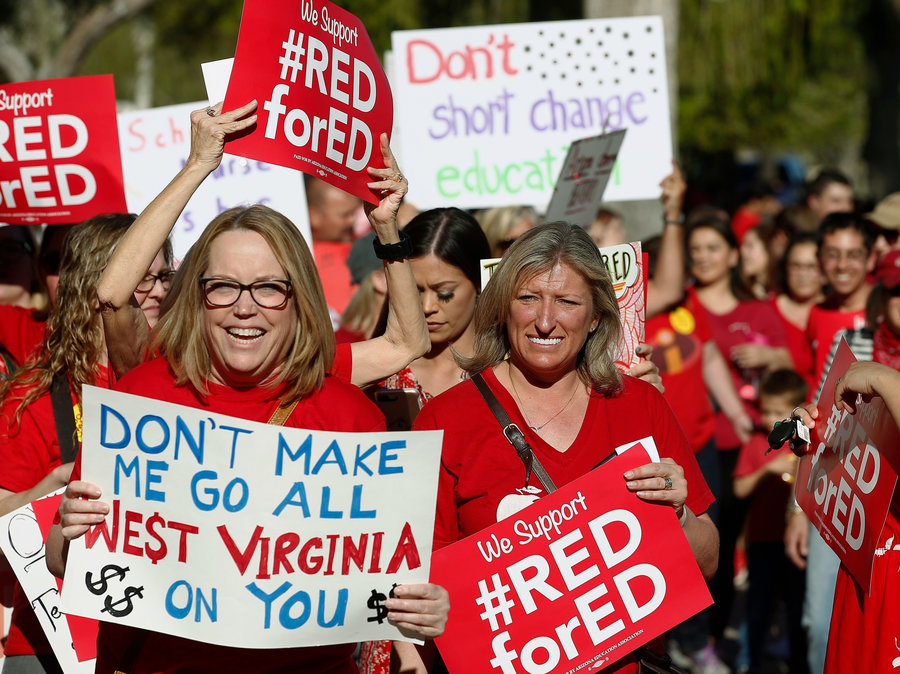Women of #RedForEd Closing the Pay Gap

By Cindy Long
Rosa Jimenez, the daughter of Mexican immigrants, is a single mom who shares a bed with her daughter in a one-bedroom apartment in Los Angeles. She holds a bachelor’s and a master’s degree, but she’s still just scraping by in a city with one of the highest costs of living in the nation. Jimenez is a high school history teacher.
Fellow Angeleno Georgia Flowers Lee is a special education teacher at Saturn Elementary School in the gentrifying mid-city section. She can’t afford to live anywhere near her school, so she commutes about an hour each way from what she calls a “challenging” part of LA. She’s been an educator—her second career—for almost two decades but still struggles to make ends meet.
“You pay the bills, and you look at what’s left and you decide, ‘OK, what do I do without this month?’” Lee says.
Across the country in rural, western Pennsylvania, Missy Brant teaches kindergarten. She says there are teachers right in her backyard who earn just over the minimum wage. The starting teacher salary in Pennsylvania is $18,500 and has been since 1989, when Brant was just 8 years old and thinking of becoming a teacher like her mom. It never occurred to her that educators would be worse off now than they were then.
Jimenez, Flowers Lee, and Brant aren’t alone. Across the nation, teachers—most of them women—are underpaid and struggling. Their growing frustration has fueled a nationwide movement called #RedForEd that demands professional pay for professional work.
Professions dominated by women have lower pay, but even within the profession there is CONTINUE READING: Women of #RedForEd Closing the Pay Gap - NEA Today
